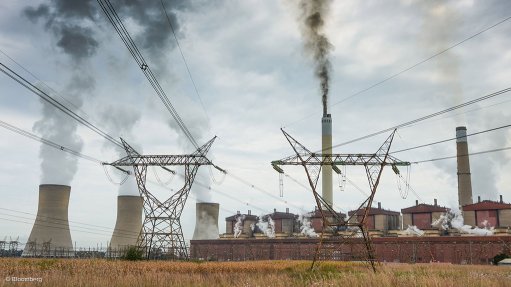The return of the Hindenburg
One of the most compelling sound recordings of all time was made by Herb Morrison in 1937. His eyewitness recording of and commentary on the explosion and crash of the German passenger airship, the Hindenburg, makes amazing listening.
On May 6, 1937, while preparing to land at the Lakehurst Naval Air Station in New Jersey, the Hindenburg burst into flames and crashed to the ground, killing 35 of the 97 people on board and one member of the ground crew. There is speculation about what exactly caused the craft to burst into flames but there is no doubt about the source of fuel – the Hindenburg floated in the sky, since it was filled with gas bags containing highly flammable hydrogen.
Hydrogen is back in the news, but not for aircraft. There is much reference to ‘green hydrogen’ and it’s touted as a wonderful solution to getting rid of greenhouse gases and fighting climate change. Like many wonderful solutions, the means by which this will happen may not be clear to all. So, here is some clarification.
To make hydrogen, you connect a battery positive and negative to some water that has been made to conduct (you could add some salt, for example). This is as simple as connecting wires to a battery and connecting the other ends to two stainless steel rods which are placed in the water. When the current flows, hydrogen will bubble off one rod and oxygen off the other. This is called an electrolyser. Green hydrogen is created when the source of electrical current is from renewable resources such as wind turbines, solar cells or suchlike. The idea is that the green hydrogen is then stored and bottled, thus storing the renewable energy for use at a later time. To turn the hydrogen into electrical energy, you run it (and some oxygen or air) through a device called a fuel cell. To turn hydrogen and oxygen into electricity, every fuel cell needs an anode and a cathode and an electrolyte membrane.
Hydrogen enters the fuel cell at the anode, and oxygen at the cathode. Platinum metal is most often used as part of the anode catalyst. When hydrogen enters the fuel cell at the anode, the platinum-containing catalyst separates it into protons (H+) and electrons (e–). The protons travel through the electrolyte membrane towards the cathode, where electrons are diverted to an external circuit that generates an electrical current. A water molecule is the only by-product of this reaction. This whole process is about 45 % efficient. So, in theory, if you build some renewable-energy generators, you can use half of them to supply the electrical load and half of them to supply an electrolyser, store the hydrogen and then, when the wind is not blowing or it’s night-time, you use the hydrogen and the fuel cell to supply the electrical load.
All this looks good on paper, but there is a big catch – platinum is not cheap; right now, it is 61% of the price of gold (copper is about 0.6% of the price of gold). And mining platinum can’t be considered in any way a ‘green’ activity. Right now, that famous band of people, ‘scientists’, are working on fuel cells which are not platinum based. Zirconium nitride nanoparticles apparently show promise and are not expensive, although I doubt they are now available at the local corner store.
The take-home from this is that, right now, green hydrogen is a nonstarter because the fuel cells are too expensive. But to return to the Hindenburg audio recording: we all know that audio recording and storage has reached technology which was unthinkable 85 years back. I am sure that catalyst technology will greatly improve. Now, if they could just devise a means of removing the visual impact of 65-m-high wind turbine towers by finding a way to get energy out of the wind without the huge turbines, things would be really good. I hope.
Article Enquiry
Email Article
Save Article
Feedback
To advertise email advertising@creamermedia.co.za or click here
Comments
Press Office
Announcements
What's On
Subscribe to improve your user experience...
Option 1 (equivalent of R125 a month):
Receive a weekly copy of Creamer Media's Engineering News & Mining Weekly magazine
(print copy for those in South Africa and e-magazine for those outside of South Africa)
Receive daily email newsletters
Access to full search results
Access archive of magazine back copies
Access to Projects in Progress
Access to ONE Research Report of your choice in PDF format
Option 2 (equivalent of R375 a month):
All benefits from Option 1
PLUS
Access to Creamer Media's Research Channel Africa for ALL Research Reports, in PDF format, on various industrial and mining sectors
including Electricity; Water; Energy Transition; Hydrogen; Roads, Rail and Ports; Coal; Gold; Platinum; Battery Metals; etc.
Already a subscriber?
Forgotten your password?
Receive weekly copy of Creamer Media's Engineering News & Mining Weekly magazine (print copy for those in South Africa and e-magazine for those outside of South Africa)
➕
Recieve daily email newsletters
➕
Access to full search results
➕
Access archive of magazine back copies
➕
Access to Projects in Progress
➕
Access to ONE Research Report of your choice in PDF format
RESEARCH CHANNEL AFRICA
R4500 (equivalent of R375 a month)
SUBSCRIBEAll benefits from Option 1
➕
Access to Creamer Media's Research Channel Africa for ALL Research Reports on various industrial and mining sectors, in PDF format, including on:
Electricity
➕
Water
➕
Energy Transition
➕
Hydrogen
➕
Roads, Rail and Ports
➕
Coal
➕
Gold
➕
Platinum
➕
Battery Metals
➕
etc.
Receive all benefits from Option 1 or Option 2 delivered to numerous people at your company
➕
Multiple User names and Passwords for simultaneous log-ins
➕
Intranet integration access to all in your organisation

















